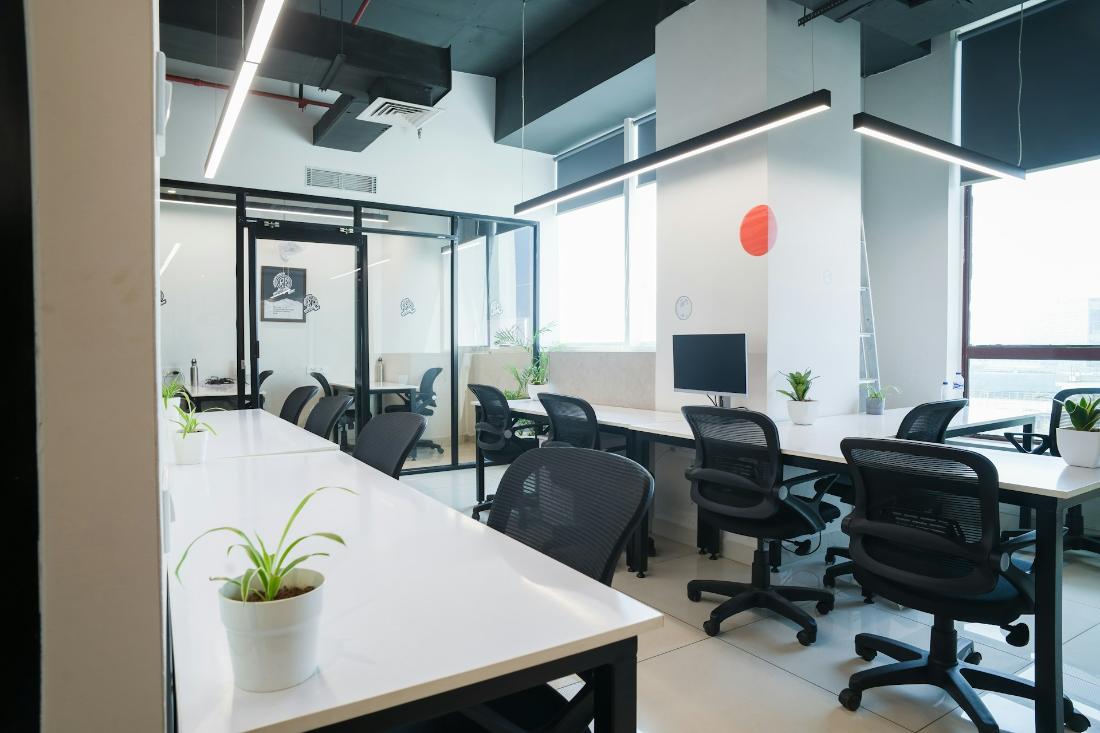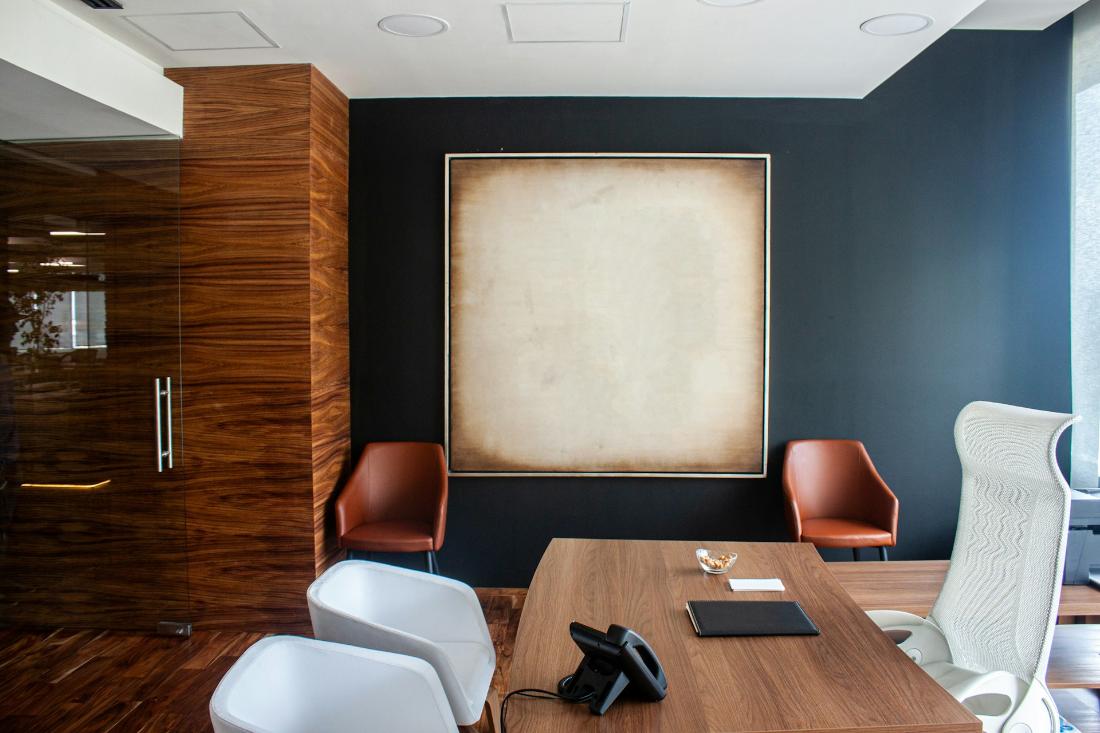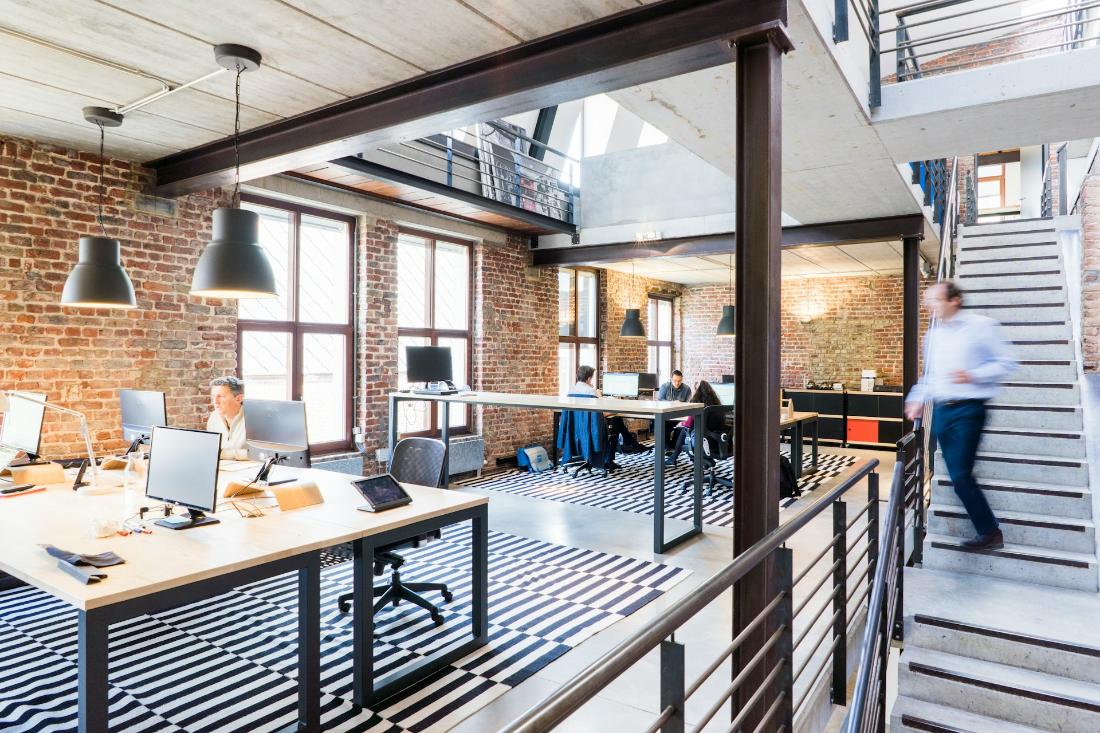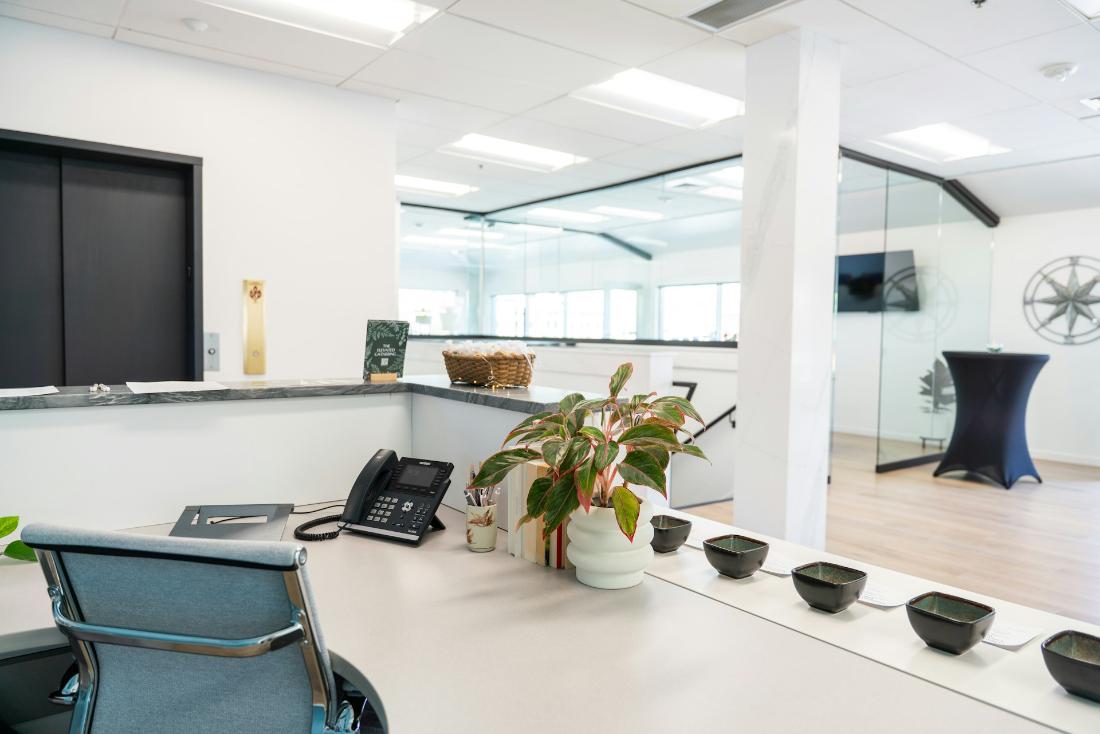Room
Office Design and Build Contractor in Malaysia: Crafting Workspaces That Inspire Malaysian Excellence
Oct 14 2025
The transformation begins quietly—amid the scent of fresh paint and the gentle hum of power tools, a space once defined by cubicles and fluorescent lighting gradually reveals its new identity. I remember watching a design team in Kuala Lumpur's Golden Triangle district as they transformed a conventional office floor into a vibrant ecosystem of collaboration zones, focus areas, and social spaces. The lead designer, her hands tracing the elegant curve of a new reception counter, explained, "We're not just designing offices; we're creating environments where Malaysian talent can do their best work." In that moment, I understood that office design and build contractors in Malaysia serve as crucial partners in shaping the future of work, blending cultural understanding with global best practices to create spaces that inspire innovation and foster connection.
In Malaysia's dynamic business landscape, the modern office has evolved from a mere place of work into a strategic tool for attracting talent, enhancing productivity, and expressing corporate identity. This transformation demands contractors who understand not just construction, but human psychology, technological integration, and the unique cultural nuances of the Malaysian workplace. This article explores the sophisticated world of office design and construction in Malaysia, the specialized knowledge required to create workspaces that excel in our unique environment, and how to identify partners who can deliver not just beautiful spaces, but environments that truly work for the people who use them.
The Malaysian Workplace Revolution: Designing for Diversity and Dynamism
Malaysia's multicultural workforce presents both opportunities and challenges for office design. The modern Malaysian office must accommodate diverse working styles, cultural preferences, and generational expectations while maintaining a cohesive corporate identity. I've consulted on projects where designers created prayer rooms that blend seamlessly with contemporary aesthetics, pantries that accommodate everything from quick tea breaks to festive gatherings, and collaboration spaces that respect both Eastern collectivism and Western individualism. A design principal with projects across Southeast Asia explained how Malaysian offices require a unique balance—spaces that feel both globally sophisticated and locally comfortable.
The tropical climate influences every aspect of office design in Malaysia, from material selection to spatial planning. The intense sunlight demands careful consideration of window treatments and lighting design, while high humidity affects everything from furniture choices to acoustic solutions. The most knowledgeable designers understand how to work with Malaysia's climate rather than against it, creating environments that feel fresh and comfortable while minimizing energy consumption. A sustainability specialist showed me how strategic window placement and native plant integration can reduce cooling costs by up to thirty percent while creating more pleasant working environments.
The rapid evolution of work patterns, accelerated by pandemic experiences, has fundamentally changed what businesses need from their offices. Hybrid work models, flexible schedules, and activity-based working have replaced the traditional nine-to-five office paradigm. Forward-thinking contractors understand that today's offices must serve as collaboration hubs, culture carriers, and innovation catalysts rather than simply places for individual work. A project director for a technology company's new headquarters demonstrated how they're creating "neighborhoods" within the office—each with different characters and purposes to support various work activities throughout the day.
In Malaysia's dynamic business landscape, the modern office has evolved from a mere place of work into a strategic tool for attracting talent, enhancing productivity, and expressing corporate identity. This transformation demands contractors who understand not just construction, but human psychology, technological integration, and the unique cultural nuances of the Malaysian workplace. This article explores the sophisticated world of office design and construction in Malaysia, the specialized knowledge required to create workspaces that excel in our unique environment, and how to identify partners who can deliver not just beautiful spaces, but environments that truly work for the people who use them.
The Malaysian Workplace Revolution: Designing for Diversity and Dynamism
Malaysia's multicultural workforce presents both opportunities and challenges for office design. The modern Malaysian office must accommodate diverse working styles, cultural preferences, and generational expectations while maintaining a cohesive corporate identity. I've consulted on projects where designers created prayer rooms that blend seamlessly with contemporary aesthetics, pantries that accommodate everything from quick tea breaks to festive gatherings, and collaboration spaces that respect both Eastern collectivism and Western individualism. A design principal with projects across Southeast Asia explained how Malaysian offices require a unique balance—spaces that feel both globally sophisticated and locally comfortable.
The tropical climate influences every aspect of office design in Malaysia, from material selection to spatial planning. The intense sunlight demands careful consideration of window treatments and lighting design, while high humidity affects everything from furniture choices to acoustic solutions. The most knowledgeable designers understand how to work with Malaysia's climate rather than against it, creating environments that feel fresh and comfortable while minimizing energy consumption. A sustainability specialist showed me how strategic window placement and native plant integration can reduce cooling costs by up to thirty percent while creating more pleasant working environments.
The rapid evolution of work patterns, accelerated by pandemic experiences, has fundamentally changed what businesses need from their offices. Hybrid work models, flexible schedules, and activity-based working have replaced the traditional nine-to-five office paradigm. Forward-thinking contractors understand that today's offices must serve as collaboration hubs, culture carriers, and innovation catalysts rather than simply places for individual work. A project director for a technology company's new headquarters demonstrated how they're creating "neighborhoods" within the office—each with different characters and purposes to support various work activities throughout the day.
Understanding the Design-Build Process for Malaysian Offices
The integrated design-build approach has emerged as the most effective method for creating successful office environments in Malaysia's fast-moving business landscape.
Strategic Programming and Needs Analysis forms the crucial foundation of any successful office project. Before any design begins, experienced contractors invest time understanding the organization's culture, work processes, and future direction. They conduct interviews with staff at all levels, analyze workflow patterns, and study how technology is used throughout the organization. This deep understanding enables them to create spaces that not only look impressive but actually enhance how people work. I watched a design team spend two weeks immersed in a client's existing operations before sketching a single line—their subsequent design solved workflow inefficiencies the client hadn't even recognized.
Space Planning and Circulation Design determines how people move through and experience the office. The best designers understand the subtle psychology of space—how ceiling heights affect conversation volumes, how natural light influences mood, and how circulation paths can either encourage interaction or create bottlenecks. Their plans balance open collaboration areas with private focus spaces, social zones with formal meeting rooms, and individual work points with team areas. A designer specializing in creative industries showed me how careful space planning increased chance encounters between different departments by forty percent, sparking collaborations that previously wouldn't have occurred.
Material Selection and Palette Development must consider both aesthetics and practical performance in the Malaysian context. Materials need to withstand high humidity, resist fading from intense sunlight, and maintain their appearance under heavy use while creating the desired atmosphere. Knowledgeable contractors maintain relationships with local and international suppliers who understand these requirements, sourcing materials that combine beauty, durability, and appropriate environmental credentials. A project manager explained how they've developed a curated selection of materials specifically tested for performance in Malaysian conditions—from humidity-resistant wood alternatives to fade-resistant textiles.
Technology Integration and Future-Proofing has become increasingly critical in modern office design. From structured cabling and wireless networks to video conferencing systems and smart building controls, technology must be seamlessly integrated rather than added as an afterthought. The most advanced contractors collaborate with technology specialists to create infrastructures that support current needs while accommodating future developments. An IT manager credited his design-build team's understanding of technology requirements with creating an office where systems worked flawlessly from day one, with ample capacity for future expansion.
The integrated design-build approach has emerged as the most effective method for creating successful office environments in Malaysia's fast-moving business landscape.
Strategic Programming and Needs Analysis forms the crucial foundation of any successful office project. Before any design begins, experienced contractors invest time understanding the organization's culture, work processes, and future direction. They conduct interviews with staff at all levels, analyze workflow patterns, and study how technology is used throughout the organization. This deep understanding enables them to create spaces that not only look impressive but actually enhance how people work. I watched a design team spend two weeks immersed in a client's existing operations before sketching a single line—their subsequent design solved workflow inefficiencies the client hadn't even recognized.
Space Planning and Circulation Design determines how people move through and experience the office. The best designers understand the subtle psychology of space—how ceiling heights affect conversation volumes, how natural light influences mood, and how circulation paths can either encourage interaction or create bottlenecks. Their plans balance open collaboration areas with private focus spaces, social zones with formal meeting rooms, and individual work points with team areas. A designer specializing in creative industries showed me how careful space planning increased chance encounters between different departments by forty percent, sparking collaborations that previously wouldn't have occurred.
Material Selection and Palette Development must consider both aesthetics and practical performance in the Malaysian context. Materials need to withstand high humidity, resist fading from intense sunlight, and maintain their appearance under heavy use while creating the desired atmosphere. Knowledgeable contractors maintain relationships with local and international suppliers who understand these requirements, sourcing materials that combine beauty, durability, and appropriate environmental credentials. A project manager explained how they've developed a curated selection of materials specifically tested for performance in Malaysian conditions—from humidity-resistant wood alternatives to fade-resistant textiles.
Technology Integration and Future-Proofing has become increasingly critical in modern office design. From structured cabling and wireless networks to video conferencing systems and smart building controls, technology must be seamlessly integrated rather than added as an afterthought. The most advanced contractors collaborate with technology specialists to create infrastructures that support current needs while accommodating future developments. An IT manager credited his design-build team's understanding of technology requirements with creating an office where systems worked flawlessly from day one, with ample capacity for future expansion.
What Separates Exceptional Design-Build Contractors
The difference between adequate office construction and exceptional workplace creation becomes apparent in both the process and the final result. Through evaluating numerous office projects across Malaysia, several key differentiators emerge among top-tier contractors.
Design Thinking and Human-Centered Approach enables contractors to create spaces that truly serve the people who use them. The best design teams employ ethnographic research methods, observing how people actually work rather than just asking what they want. They understand that the most successful designs often solve problems users didn't even know they had. This approach proved transformative when a design team reconfigured an entire office floor based on their observations of natural movement patterns and interaction behaviors, resulting in significantly improved communication and collaboration.
Technical Expertise and Construction Quality ensures that beautiful designs translate into well-executed realities. Exceptional contractors maintain high standards of workmanship while understanding how to solve the complex technical challenges that arise when transforming creative designs into buildable solutions. Their project teams include experienced site managers who maintain quality control while keeping projects on schedule and within budget. A facilities director showed me an office that still looked pristine after five years of heavy use—a testament to the contractor's commitment to quality materials and construction techniques.
Project Management and Timeline Adherence is particularly important for office projects where business operations are disrupted during construction. The best contractors develop detailed phasing plans that minimize disruption, coordinate complex sequences of work, and maintain clear communication throughout the process. Their experience with similar projects allows them to anticipate challenges and develop practical solutions before they impact the schedule. I witnessed impressive coordination during a corporate headquarters renovation where the contractor completed the project two weeks ahead of schedule despite unexpected structural issues, saving the client significant operational costs.
Sustainability and Wellness Integration demonstrates forward-thinking design philosophy. Progressive contractors understand the importance of creating healthy, environmentally responsible workplaces that contribute to staff wellbeing while reducing operational costs. Their designs incorporate biophilic elements, optimize natural light, use low-VOC materials, and include features that promote movement and social connection. A green building consultant explained how their office designs typically achieve both Green Building Index certification and measurable improvements in staff satisfaction and productivity.
The difference between adequate office construction and exceptional workplace creation becomes apparent in both the process and the final result. Through evaluating numerous office projects across Malaysia, several key differentiators emerge among top-tier contractors.
Design Thinking and Human-Centered Approach enables contractors to create spaces that truly serve the people who use them. The best design teams employ ethnographic research methods, observing how people actually work rather than just asking what they want. They understand that the most successful designs often solve problems users didn't even know they had. This approach proved transformative when a design team reconfigured an entire office floor based on their observations of natural movement patterns and interaction behaviors, resulting in significantly improved communication and collaboration.
Technical Expertise and Construction Quality ensures that beautiful designs translate into well-executed realities. Exceptional contractors maintain high standards of workmanship while understanding how to solve the complex technical challenges that arise when transforming creative designs into buildable solutions. Their project teams include experienced site managers who maintain quality control while keeping projects on schedule and within budget. A facilities director showed me an office that still looked pristine after five years of heavy use—a testament to the contractor's commitment to quality materials and construction techniques.
Project Management and Timeline Adherence is particularly important for office projects where business operations are disrupted during construction. The best contractors develop detailed phasing plans that minimize disruption, coordinate complex sequences of work, and maintain clear communication throughout the process. Their experience with similar projects allows them to anticipate challenges and develop practical solutions before they impact the schedule. I witnessed impressive coordination during a corporate headquarters renovation where the contractor completed the project two weeks ahead of schedule despite unexpected structural issues, saving the client significant operational costs.
Sustainability and Wellness Integration demonstrates forward-thinking design philosophy. Progressive contractors understand the importance of creating healthy, environmentally responsible workplaces that contribute to staff wellbeing while reducing operational costs. Their designs incorporate biophilic elements, optimize natural light, use low-VOC materials, and include features that promote movement and social connection. A green building consultant explained how their office designs typically achieve both Green Building Index certification and measurable improvements in staff satisfaction and productivity.
Emerging Trends in Malaysian Office Design
The office design industry continues to evolve with new approaches responding to changes in work patterns, technology, and employee expectations.
Hybrid Work Support and Flexibility has become a central consideration in office design. Rather than designing primarily for full occupancy, modern offices incorporate flexible spaces that can accommodate varying numbers of staff while supporting both individual focus and team collaboration. The most innovative designs include bookable workstations, multi-purpose rooms, and technology that seamlessly connects remote and in-office team members. A workplace strategist showed me how they're creating "activity-based neighborhoods" that give employees choice and control over how and where they work throughout the day.
Wellbeing and Biophilic Design addresses growing awareness of how physical environments impact mental and physical health. Modern offices incorporate more natural materials, living plants, access to natural light, and spaces that support different working postures and activities. These elements not only create more pleasant environments but have been shown to reduce stress and improve cognitive function. The most advanced designs include dedicated wellness rooms, meditation spaces, and environments that support mental health alongside physical comfort.
Technology-Enabled Experiences are transforming how offices function and feel. From app-based room booking and wayfinding to smart lighting that adjusts throughout the day, technology is becoming increasingly integrated into the workplace experience. Forward-thinking contractors understand how to create the infrastructure for these technologies while ensuring they enhance rather than complicate the user experience. A technology integrator demonstrated how their smart office systems learn usage patterns and automatically adjust environments to optimize both comfort and energy efficiency.
Cultural Identity and Local Character is increasingly valued in Malaysian office design. Rather than creating generic international-style offices, designers are incorporating local materials, cultural references, and design elements that reflect Malaysia's unique identity. This approach creates spaces that feel authentic and connected to their location while supporting local crafts and industries. A design firm specializing in culturally responsive workplaces showed me how they're using traditional Malaysian patterns and craftsmanship in contemporary ways that feel both local and globally sophisticated.
Choosing Your Design-Build Partner
Selecting the right office design and build contractor requires careful evaluation of both creative capability and practical execution skills. Based on extensive workplace consulting experience, here's what business leaders should consider:
Portfolio Diversity and Design Philosophy should align with your company's culture and aspirations. Review completed projects to ensure the contractor's design approach matches your vision. Look for evidence that they understand how to create spaces that support different types of work and organizational cultures.
Technical Capabilities and Project Management ensures they can deliver your project successfully. Inquire about their construction experience, quality control processes, and project management methodology. Contractors with strong technical teams can translate creative designs into well-executed realities while maintaining schedules and budgets.
Understanding of Your Business and Industry enables them to create spaces that truly support your operations. The best contractors invest time in understanding your business model, work processes, and strategic direction before beginning design work. Their ability to ask insightful questions about how you work often reveals opportunities to create spaces that drive business success.
Communication Approach and Cultural Fit determines how smoothly your working relationship will develop. Ensure their communication style matches your expectations and that you feel comfortable with their team. The design and construction process involves countless decisions—having a partner you trust and communicate well with makes the journey significantly more productive and enjoyable.
The office design industry continues to evolve with new approaches responding to changes in work patterns, technology, and employee expectations.
Hybrid Work Support and Flexibility has become a central consideration in office design. Rather than designing primarily for full occupancy, modern offices incorporate flexible spaces that can accommodate varying numbers of staff while supporting both individual focus and team collaboration. The most innovative designs include bookable workstations, multi-purpose rooms, and technology that seamlessly connects remote and in-office team members. A workplace strategist showed me how they're creating "activity-based neighborhoods" that give employees choice and control over how and where they work throughout the day.
Wellbeing and Biophilic Design addresses growing awareness of how physical environments impact mental and physical health. Modern offices incorporate more natural materials, living plants, access to natural light, and spaces that support different working postures and activities. These elements not only create more pleasant environments but have been shown to reduce stress and improve cognitive function. The most advanced designs include dedicated wellness rooms, meditation spaces, and environments that support mental health alongside physical comfort.
Technology-Enabled Experiences are transforming how offices function and feel. From app-based room booking and wayfinding to smart lighting that adjusts throughout the day, technology is becoming increasingly integrated into the workplace experience. Forward-thinking contractors understand how to create the infrastructure for these technologies while ensuring they enhance rather than complicate the user experience. A technology integrator demonstrated how their smart office systems learn usage patterns and automatically adjust environments to optimize both comfort and energy efficiency.
Cultural Identity and Local Character is increasingly valued in Malaysian office design. Rather than creating generic international-style offices, designers are incorporating local materials, cultural references, and design elements that reflect Malaysia's unique identity. This approach creates spaces that feel authentic and connected to their location while supporting local crafts and industries. A design firm specializing in culturally responsive workplaces showed me how they're using traditional Malaysian patterns and craftsmanship in contemporary ways that feel both local and globally sophisticated.
Choosing Your Design-Build Partner
Selecting the right office design and build contractor requires careful evaluation of both creative capability and practical execution skills. Based on extensive workplace consulting experience, here's what business leaders should consider:
Portfolio Diversity and Design Philosophy should align with your company's culture and aspirations. Review completed projects to ensure the contractor's design approach matches your vision. Look for evidence that they understand how to create spaces that support different types of work and organizational cultures.
Technical Capabilities and Project Management ensures they can deliver your project successfully. Inquire about their construction experience, quality control processes, and project management methodology. Contractors with strong technical teams can translate creative designs into well-executed realities while maintaining schedules and budgets.
Understanding of Your Business and Industry enables them to create spaces that truly support your operations. The best contractors invest time in understanding your business model, work processes, and strategic direction before beginning design work. Their ability to ask insightful questions about how you work often reveals opportunities to create spaces that drive business success.
Communication Approach and Cultural Fit determines how smoothly your working relationship will develop. Ensure their communication style matches your expectations and that you feel comfortable with their team. The design and construction process involves countless decisions—having a partner you trust and communicate well with makes the journey significantly more productive and enjoyable.
Designing the Future of Malaysian Work
Quality office design and construction does more than create attractive spaces—it shapes organizational culture, enhances productivity, and expresses corporate values. The right design-build contractor becomes a strategic partner in creating workplaces that attract and retain talent, support innovation, and adapt to changing business needs. Their understanding of both design principles and construction realities enables them to create spaces that are not just beautiful, but functional, sustainable, and meaningful.
In a nation where businesses compete in a global marketplace, that partnership helps create work environments that enable Malaysian companies to perform at their best while providing employees with spaces where they can thrive professionally and personally. The best contractors understand that they're not just designing and building offices—they're creating the stages where Malaysian business stories unfold, supporting economic growth while enhancing the quality of work life for thousands of professionals across our nation.
Quality office design and construction does more than create attractive spaces—it shapes organizational culture, enhances productivity, and expresses corporate values. The right design-build contractor becomes a strategic partner in creating workplaces that attract and retain talent, support innovation, and adapt to changing business needs. Their understanding of both design principles and construction realities enables them to create spaces that are not just beautiful, but functional, sustainable, and meaningful.
In a nation where businesses compete in a global marketplace, that partnership helps create work environments that enable Malaysian companies to perform at their best while providing employees with spaces where they can thrive professionally and personally. The best contractors understand that they're not just designing and building offices—they're creating the stages where Malaysian business stories unfold, supporting economic growth while enhancing the quality of work life for thousands of professionals across our nation.



